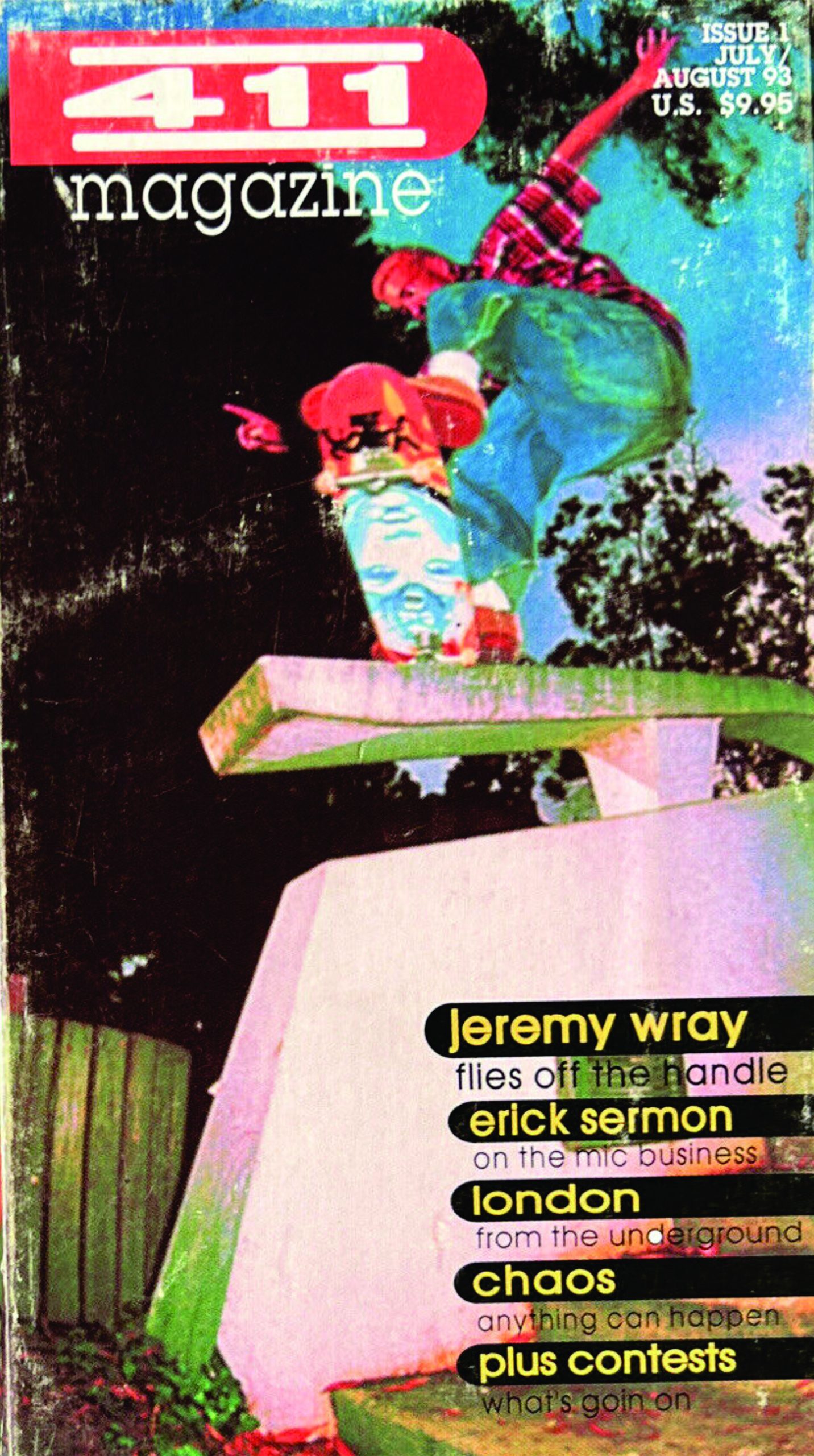Skate Vids: 411VM Issue #1 (1993)

For those outside the world of skateboarding, 411 Video Magazine (or 411VM, or just 411) was a big deal throughout the ‘90s. The concept was simple: four times a year, 411 would release an hour-plus video that captured everything that was current in the world of skateboarding at the time. They’d spotlight up-and-coming and veteran skaters, companies within the industry, shops, musicians, skate spots, and even advertisements. Like the best-known skate magazines at the time (Thrasher and Transworld), 411 was reliable, timely, and exciting for kids just starting out and old pros alike.
Over time, the slow-motion opening sequences—set to what is now some of the most recognizable music in skateboarding history—became badges of honor that skaters still proudly wear to this day. To be featured in 411 meant someone had taken notice of you and, if you were smart (or lucky), served as a stepping stone towards better things in your career as a professional skateboarder. The number of future luminaries in this 72-minute video is staggering, rivaled only by the number of skaters I’ve never heard from since.
Back in the summer of 1993, just as I was learning to ollie higher and land a decent heelflip, the first issue of 411 hit the streets in all its fuzzy VHS glory, with Jeremey Wray, Danny Mayer, Eric Koston, John Cardiel, Adam McNatt, Rob Dyrdek, Scott Johnston, Brian Howard, and Mike Daher featured in the opening segment. Surprisingly, there’s a pretty even mix of street and vert in the opener, considering vert skating was all but dead by 1993 and considered to be largely out of vogue by most skaters.
Far from polished and about thirty minutes longer than it needs to be, Issue #1 suffers from the same production shortcomings all early-’90s skateboard videos suffered from: bad color, worse sound, and choppy editing. At the same time, this era was one of the most innovative in skateboarding’s storied history. With the vert era and the awkward early days of street skating behind it, skaters were starting to learn how to combine technical tricks with ledges, handrails, and stairs in ways no one ever thought possible.
Without the goofiness of the early ’90s, there’s no telling where skateboarding would have ended up. Certainly not mainstream, and certainly not the Olympics—that much is for certain. All told, Issue #1 looks and sounds much like other videos of the time but stands out, if for no other reason than that it was the first attempt at a concept that would go on to be a highly regarded and important cornerstone of skateboarding for years to come.
